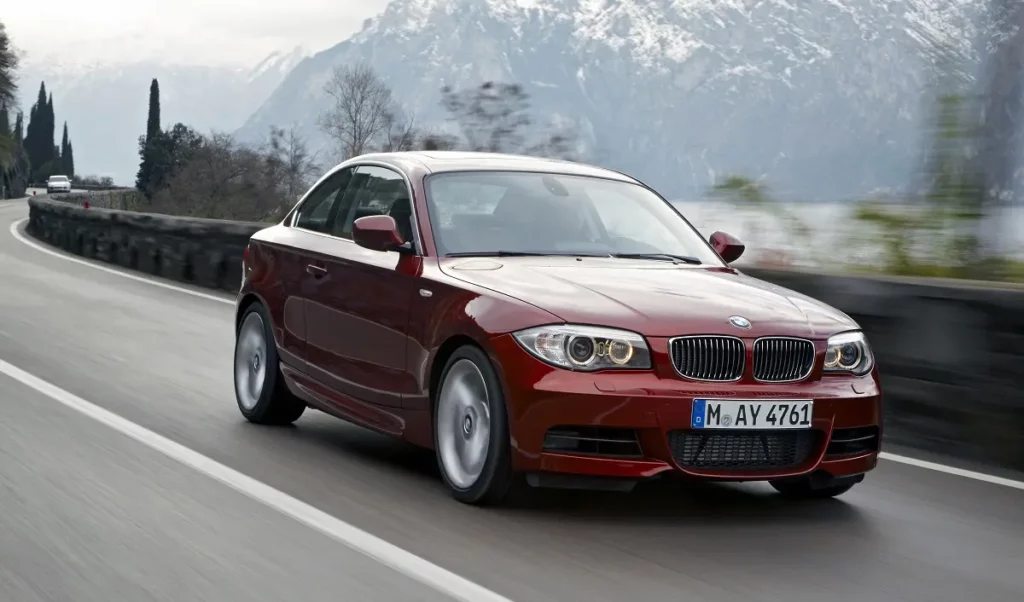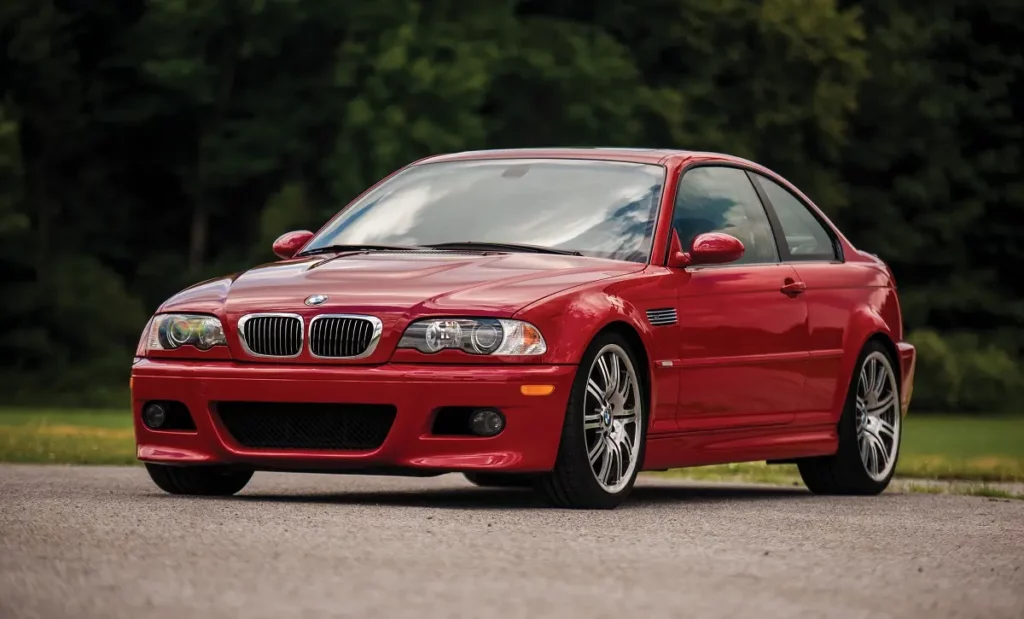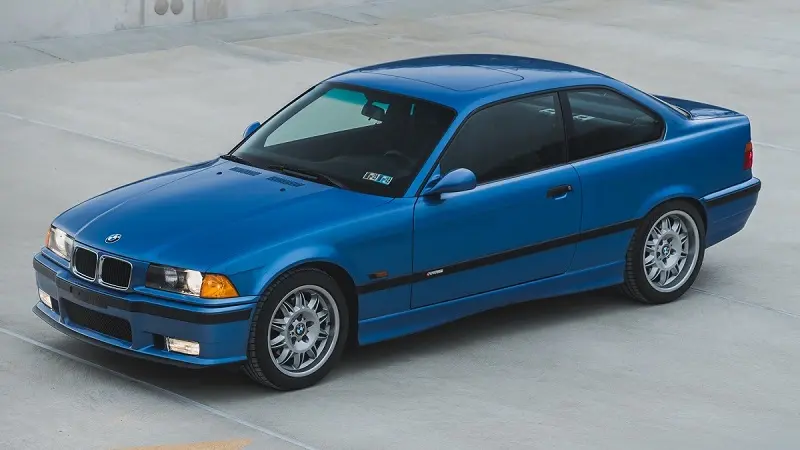For decades, BMW sports cars were considered to be among the most competent performance vehicles you can get your hands on. At least in the realm of regular production cars.
With a large customer base, they are often seen on track days, where they achieve great times, especially considering that most of these cars didn’t exactly start out as track cars. Instead, they started out as nimble, sometimes luxury machines that were adapted to their new purpose. It’s this ability to adapt to sport application that makes most BMWs a great platform for beginners and advanced drivers alike.
However, finding them on a budget can be difficult. Yet, there are a few interesting options that are worth considering. Here are the best three of them.
BMW M3 E36 {1992 – 1999]

The M model is the top-of-the-range performance model offered for the 3 Series. This M3 has been in production between 1992 and 1999. Even now when the oldest specimen is nearing thirty years of age, the E36 M3 can still keep up with modern production cars on track.
Some would even consider this old M3 to be more engaging and fun to drive than the newest M cars. Despite the US spec being less powerful than the M3 sold in Europe, there is still lots to like.
When first introduced to the market, the M3 came with a 3.0L 6-cylinder drivetrain based on the standard BMW E36 325i model. In comparison with the standard variant, the M drivetrain was significantly more powerful at 240 horsepower, had a larger displacement, and redesigned cams. After a facelift of the E36, the drivetrain was entirely replaced by a 3.2L I6, codenamed the S52. The power remained at 240 hp and 236 lb.-ft of torque, but the redline increased to 7,000 rpm, compared to the previous 6,500 rpm.
As mentioned previously, the US-spec M3s were not as lean as M3s sold overseas. European customers had access to slightly different engines, which produced around 316 horsepower, which sounds like a big difference on paper. This resulted in some heated debates about the M-worthiness of the US model.
On the other hand, the 0-60 mph times of both variants are almost identical. With 5.5 seconds to 60 mph, the US model lacks only a few tenths of a second to the 5.2 second time of the “original” M3. In addition, the more powerful engine was pushed to the limits and much more stressed due to the extra horsepower. Because of this, US M3 E36 models are more reliable.
The tuned-down drivetrain was a result of BMW’s worries about the sales of the M3 on the US market. The E30, the first generation of the M3 ever produced, was not a sales success for US BMW dealers and resulted in BMW losing quite a lot of money.
From the fear of this debacle repeating, they wanted to make the M3 more affordable. Thus, they decided to equip the M3 with an engine derived from the regular E36, only modified for higher power output, instead of a fully standalone drivetrain as on the European counterpart. Contrary to the worries, the E36 M3 ended up being a huge success in the USA and arguably one that saved the North American BMW M division.
Another great advantage of the E36 M3 is its notchy manual transmission, with which it was offered along the typical automatic gearbox. Compared to the previous generation 3 Series, this model also features a multi-link rear suspension, which significantly improves not only the comfort but also handling. Overall, the E36 generation is one of the best BMW sports cars to have on a budget, and with lots of room for tuning, it is perfectly suitable for use on the track.
BMW 135i (2008 – 2013)

The second BMW sports car on this list is the BMW 135i. This model is sometimes overlooked due to it being the entry model to BMW, but it is a serious performer. Back in 2004, when this model was first introduced, it was intended to replace the 3 Series Compact E46. As the 1 Series is now in its third generation, BMW has definitely succeeded with it. Indeed, the technology used here is quite special. This small car is strictly offered as a rear-wheel drive, and the top-of-the-range models are equipped with six-cylinder engines, which is atypical for its segment.
The 135i variant was available only for the second half of the model’s production life. Between 2008 and 2010, it was fitted with a 3.0-liter inline six-cylinder engine. Internally, it was codenamed N54 and twin-turbocharged. Generating 300 hp and 300 lb.-ft of torque, the 1 Series is stunningly quick, as it is not especially heavy at 3200 lbs. It takes only 5 seconds to get from a standstill to 60 mph when equipped with the DCT automatic transmission. In 2011, The 1 Series received an update, which introduced an innovative N55 engine for the 135i variant. It had identical displacement and power but only one turbocharger. This engine lasted in production until the end of the model’s production in 2013.
When modded, this engine can get on par with the famous 1 Series M Coupe model, which featured a tuned-up version of the N54 engine, thus producing 335 horsepower and 332 lb.-ft of torque in an over-boost mode.
As the first generation 1 Series is quite a mechanical-feeling car, getting the best out of it really takes some skill. It is essentially a budget M2, which is one of the best BMW sports cars. The chassis has been brought to perfection using suspension similar to that of the larger 3 Series.
This gives the 135i the perfect driving characteristics and together with an engine that gets maximum torque from just 1,400 rpm and pulls with strength even beyond the 120-mph mark, this car has been born for use on the track. This said, despite its modern looks, the 1 Series offers a very old-school driving experience in terms of engagement and fun. It was the last BMW to feature a hydraulic steering system, which is “dated” compared to modern electric steering but gives you much more feedback from the wheels.
BMW M3 E46 (2000 – 2006)

This model of the M3 is arguably the most iconic of them all. While not the most affordable on this list, it features immense headroom for mods and power upgrades. Plus, there is a massive community for this car. Just look at bimmerfest, e46fnatics, and similar popular forums. In fact, over 43,000 units have been sold on the US market.
First introduced in 2000, the M3 E46 was a major upgrade to the previous iteration. While it used the same recipe for success, it introduced a number of technological upgrades. With an exciting exhaust note, an engine that loves to be revved, and no driver assists, this is the perfect driver’s car. That said, the BMW M division has made this generation more comfortable and equipped it with luxury features such as a built-in navigation system, or automatic climate controls.
Contrary to the E36, this generation of the US-spec M3 shared the same drivetrain with its European sibling. There were only minor differences between the two versions. It was thus equipped with an in-line 6-cylinder engine, internally named S54. This 3.2-liter drivetrain is able to generate 333 horsepower and 262 lb.-ft of torque, resulting in a 0-60 time of just 4.8 seconds.
With natural aspiration, the engine offers linear power delivery, allowing you to precisely control the power input in corners. Not only that, but the S54 loves getting into high revs with a redline at 7,900 rpm! Customers were able to choose between a 6-speed manual and a revolutionary SMG gearbox. Today, the manual is the preferred choice, as the sequential manual transmission was prone to failures and quite clunky.
Naturally, as a proper BMW sports car, the E46 is rear-wheel drive, which gives it superb driving characteristics. These could have been improved even further with the optional Competition package, which included equipment such as larger brakes, 19-inch alloys, a steeper steering ratio, and a track mode setting, which adjusted the stability control system.
For use on the track, the ideal choice is an M3 coupe with a manual transmission. It is better to avoid the convertible M3, as the chassis does not have the needed structural rigidity and is heavier. In regard to the transmission, the SMG was an advanced piece of technology back in its day, but many find it too slow to shift, which is really not something you want to deal with on track.
When buying the E46 M3, you want to make sure to thoroughly inspect it. While it is relatively cheap to get, there are some issues that could cost you a small fortune to fix. This is another reason why choosing the less elaborate manual transmission is the better choice. One serious issue is the mounting points of the rear subframe, which can crack over time, leaving you with quite a large repair bill. If you check for these issues, your car will run for ages and at a pretty low cost, even though we know how it is with weekend and track cars – new wheels here, a different steering wheel there, and the costs add up quickly. But that is not the M3’s fault.
Fast and Exciting, Yet Affordable BMW Sports Cars
BMW Sports cars are one of the pinnacles the automotive world has to offer. As great as the newest M3 and M5 models are, the older BMWs still have their charm, and are perhaps even more engaging and fun due to the lack of modern assists and technologies.
For this reason, they can also be had on a lower budget, which makes them perfect for use on track even by beginning drivers. If you can, go and get one now, before the models become true historical gems that skyrocket in value. The E46 and E30 models are already starting to appreciate, and other BMW sports cars will soon follow.





